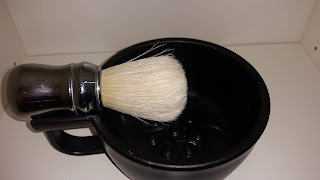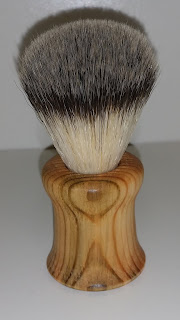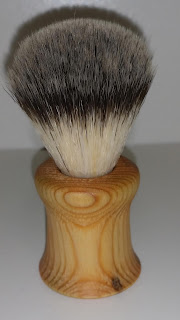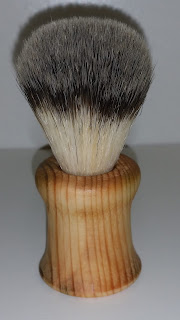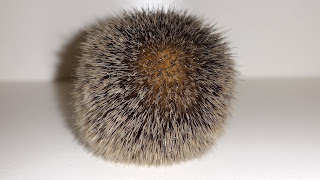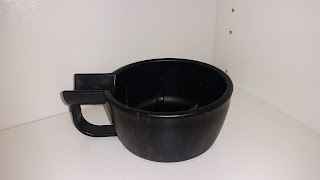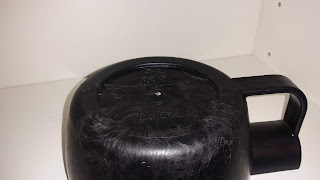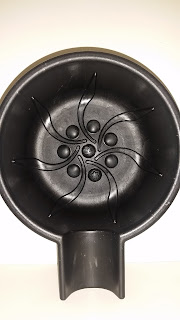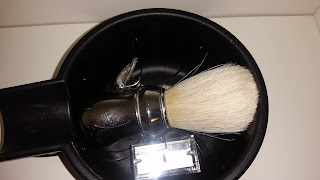I’ve been lucky enough to receive a prototype plastic lathering bowl from Perira Shavery. Having used it a fair bit, I feel it’s time to make a review of it.
It’s unbreakable – dropping it from almost two meters (close to 6 feet 6 inches) up onto the bathroom floor only makes it bounce (and will make your wife come to see what you are up to). You’ll honestly be more likely to take chips out of the floor than this bowl, it is almost infantry safe!
The Pereira logo is embossed on the underside of the bowl – subtle, but there to let you know who made it. The prototype I was lucky enough to receive is – as you can see from all the photos – black, but I’m told that it will be available in several other colours as well; the classic black and white, faux wood for a timeless feel, bold avocado green for those wanting to make a statement, and bright red to make sure you’ll always spot it.
The inside of the bowl have a raised pattern of ridges and bumps, aiding greatly in the rapid building of thick luxurious lather. The design itself is one that speaks to me on an almost sub-conscious level; it reminds me of water turbines and the intake of jet engines… while I realise this may not speak to everyone the same way, it endears me to the bowl even further.
The sturdiness also makes it a convenient travel bowl; you don’t have to worry about the luggage handles breaking it when it cannot be broken! With an inside diameter of 12.5cm (5″), you easily fit your razor and brush inside it while travelling – or for convenient storage if your shaving den is modest in size. You can also comfortable fit a whole puck of soap inside it, for travel or storage.
As with Pereira’s other bowls, this have a built in brush rest – a very nice and useful addition to any lathering bowl or scuttle. It means your brush have a place to stay while shaving, rather than having it sit on the counter-top or fall into the sink. It also gives a place to rest the brush handle against while soaking, rather than sliding around.
The plastic bowl also big enough to fit my largest brushes, something not a lot of lathing bowls can do in my experience. For that reason alone I’m happy to include the plastic lathering bowl among my regular bowl rotation, since no other bowl I have will let me really swing my big Omega board brush around in the same way as this does.
I’m not sure what these will sell for or when they will be available, but if you’re in the marked for a bowl that you can bring with you when travelling or just like your bowls big enough for any brush you should keep an eye out at Pereira Shavery – or even sign up for their newsletter.
Like this:
Like Loading...






